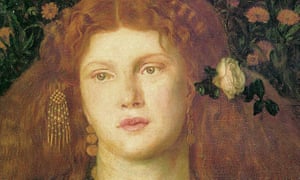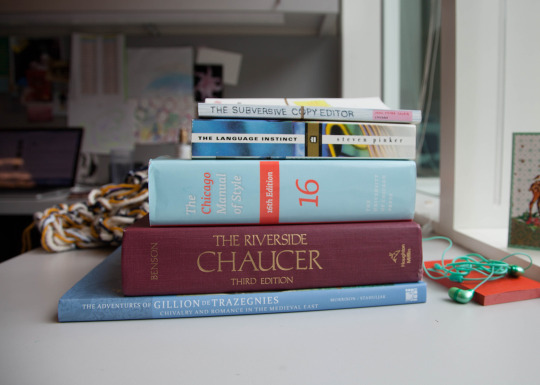With or without Super Bowl LI, Houston is a winner - Chicago Tribune
A PERSONAL JOURNAL, KEPT LARGELY TO RECORD REFERENCES TO WRITINGS, MUSIC, POLITICS, ECONOMICS, WORLD HAPPENINGS, PLAYS, FILMS, PAINTINGS, OBJECTS, BUILDINGS, SPORTING EVENTS, FOODS, WINES, PLACES AND/OR PEOPLE.
About Me
- Xerxes
- New Orleans, Louisiana, United States
- Admire John McPhee, Bill Bryson, David Remnick, Thomas Merton, Richard Rohr and James Martin (and most open and curious minds)
31.1.17
Man for All Seasons
Today is the birthday of Thomas Merton (books by this author), born in Prades, France (1915). His mother was an American, and his father was from New Zealand. They were both artists, and they met at an art school in Paris. Merton's mother died of stomach cancer when he was six years old; 10 years later, his father died of a brain tumor.
Merton converted to Catholicism in 1938, while he was a student at Columbia University. He taught English for a while at St. Bonaventure College, but he continued studying Catholicism, and the spiritualism of William Blake. On December 10, 1941, he quit his job and entered the Abbey of Our Lady of Gethsemani in Kentucky, to begin his life as a Trappist monk. He continued studying, and kept journals full of his questions and musings. His superior at the monastery, Father Abbot Dom Frederic Dunne, noticed his talent for writing and encouraged him to continue. He began by translating religious texts and writing biographies of the saints.
In 1961, Merton wrote, "It is possible to doubt whether I have become a monk (a doubt that I have to live with), but it is not possible to doubt that I am a writer, that I was born one and will most probably die as one." Over the course of his life, Merton wrote more than 70 books, 2,000 poems, and numerous essays and lectures. He's perhaps best known for his spiritual autobiography and conversion narrative, The Seven Storey Mountain (1948). It's been compared to the Confessions of St. Augustine. He ends the book with the line Sit finis libri, non finis quaerendi: "Here ends the book, but not the searching."
From The Seven Storey Mountain: "It is only the infinite mercy and love of God that has prevented us from tearing ourselves to pieces and destroying His entire creation long ago.People seem to think that it is in some way a proof that no merciful God exists, if we have so many wars. On the contrary, consider how in spite of centuries of sin and greed and lust and cruelty and hatred and avarice and oppression and injustice, spawned and bred by the free wills of men, the human race can still recover, each time, and can still produce man and women who overcome evil with good, hatred with love, greed with charity, lust and cruelty with sanctity."
30.1.17
29.1.17
28.1.17
From Ma Gi Lin
New Spring; 新春. Colour woodblock print. Henan province, China, early 20th century.
British Museum 28 January 2017
恭禧發財
These characters say Happy New Year in Chinese and are pronounced ‘Gong Xi Fa Cai’ (in Mandarin) and ‘Gong Hey Fat Choy’ (in Cantonese).
Chinese New Year is the most important festival in China’s calendar and it lasts for 15 whole days! Instead of presents, special red envelopes filled with money are given to children, and families pay special respect to their ancestors at this time.

Money envelopes used at Chinese New Year.
According to legend, in ancient China, Nian, a man-eating beast from the mountains, could enter houses silently to hurt humans. The people learnt that Nian was sensitive to loud noises and the colour red, so they scared it away with explosions, fireworks and by decorating everywhere in red. These customs led to the first New Year celebrations and continue to this day – fireworks and firecrackers are a large part of Chinese New Year celebrations.
There are lots of superstitions about New Year. Before the New Year, Chinese families give their home a thorough cleaning to sweep away bad luck. Brooms and dustpans are put away on New Year’s Eve so that good luck cannot be swept away. Everyone opens their windows and doors so the good luck of the year can get in. Buying shoes and trousers is considered bad luck as the Cantonese word for shoes sounds like ‘rough’ and the word for trousers sounds like ‘bitter’. Getting a haircut is also thought to be bad luck as the Cantonese word for ‘hair’ sounds like ‘prosperity’, so people worry that by cutting their hair they will make the New Year a bad one.

Demon-Queller Zhong Kui. Colour woodblock print. Printed in Suzhou, China, Qing dynasty, 1700–1800.
This is a print of the ‘demon queller’ Zhong Kui, who has subdued a demon. It was a popular New Year custom to display images of Zhong Kui to protect a household. The branch of blossoming plum appearing from behind his back suggests that this print was made for the lunar New Year since the tree blossoms around this time.
The Chinese zodiac
In Chinese culture, each year is named after one of twelve animals of the traditional zodiac. There are various legends that explain how this came about. One has it that twelve animals came to visit the Buddha when he asked for visitors. As a reward, the Buddha named the years after each animal as they came before him. The Chinese believe that people take on the special qualities of the animal of their birth year. The Chinese calendar also assigns animals to months, days and even times of day though. It’s fairly complicated, so have a look at Wikipedia if you’re interested!

Copper alloy coin-shaped charm. This side shows the 12 zodiac animals and the Chinese character for each. Made in China, probably 19th century,
Here’s a list of the animals and the qualities you might have if you’re born in that year:

You can work out your own animal in this handy chart on Wikipedia. Which animal are you? Do you think you sound like the description?
In 2017, Chinese New Year falls on 28 January when it will be the Year of the Rooster. The Chinese New Year starts in late January or early February because the Chinese calendar is lunisolar – i.e. based on the moon and the sun (not just the sun like the Gregorian calendar).

New Spring; 新春. Colour woodblock print. Henan province, China, early 20th century.
As well as being this year’s animal, as early as the 6th century AD, it was customary in China to paste an image of a rooster on the door on the first day of the lunar New Year to protect the household. The rooster is associated with the sun – at cockcrow all the darkness of evil is thought to disappear. Isn’t that a nice thought to end on?
27.1.17
Sex
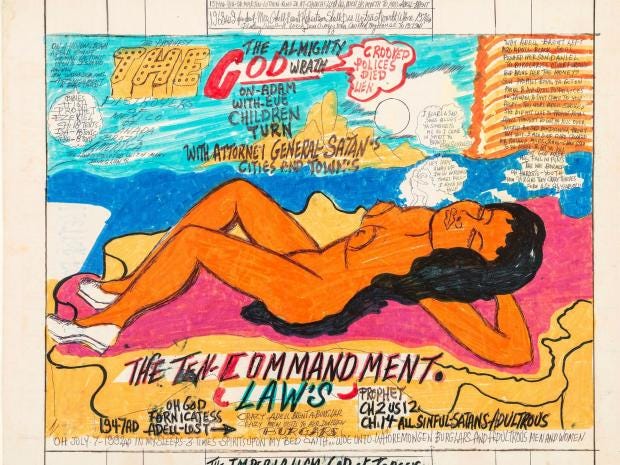
‘Outsider Art’ is used to refer to some self-taught artists. Many of these ‘outsiders’ have mental health problems, live in institutions or isolation, or are in some other way removed from wider society. They are typically hermits, religious obsessives and loners. It is a genre heavily steeped in the so-called ‘art of the insane’ and its predecessor is French artist Jean Debuffet’s genre Art Brut (“raw art”), a collection of work by asylum-dwellers, children and prisoners.
These artists operate outside the confines of visual arts education, societal norms and expectations. But one of the criticisms often levied at the terminology is that ‘Outsider Art’ is patronising or ‘othering’. That it in some way hints at a primitive compulsion to create art that is closer, perhaps, to our ancestors who painted on cave walls than to the art which hangs in Tate Modern. It suggests that ‘outsiders’ paint without the 'concepts' that drive contemporary art. That theirs is pure impulse – physical, even – rather than intellectual.
This tension will be interestingly, intriguingly explored in New York later this month. To coincide with the 25th Outsider Art Fair ever held in the Big Apple another rather surprising show is making an appearance and providing another answer as to why human beings create art. It is called ‘Known/Unknown: Private Obsession and Hidden Desire in Outsider Art’ and is at Manhattan's famous Museum of Sex (MoSex). It is believed to be the first time a collection of erotic artworks by outsider artists have been brought under one roof.

Morton Bartlett, Untitled, c. 1950s, gelatin silver print. Courtesy Marion Harris, New York
The show is set to shock. Sure, there are images of genitalia and sexual overtones in plenty of commercial and public galleries. But, there’s something unbridled, blatant and overt about the raw expressions of desire set to go on show at MoSex. Why? Because these artworks, for the most part, were never intended to be seen. They quite literally and unrestrainedly express sexuality, but without the self-consciousness of a Jake and Dinos Chapman who (arguably) want to leave the Mary Whitehouses in the gallery in tears. Almost all the artists exhibited at MoSex, and more broadly in at the Outsider Art Fair, are long dead and never sought public exhibition of their work. Put simply: they did it for themselves.
“What is compelling about the pieces in Known/Unknown is that at first sight the work appears to be relatively straightforward,” says MoSex director of exhibitions Mark Snyder. “However, on a closer look, the images in the show are often complicated by an artist's traumatic or psychologically-driven event that shifts them away from reality, and makes the viewer’s encounter with the pieces all the more intimate and challenging.”
In some cases in Known/Unknown the artworks appear to reveal dark, possibly deviant, desires which, if played out in reality, would lead to arrest. But there are also examples of intense passion that underpins functional marriage or the erotica that fills a void of grief.
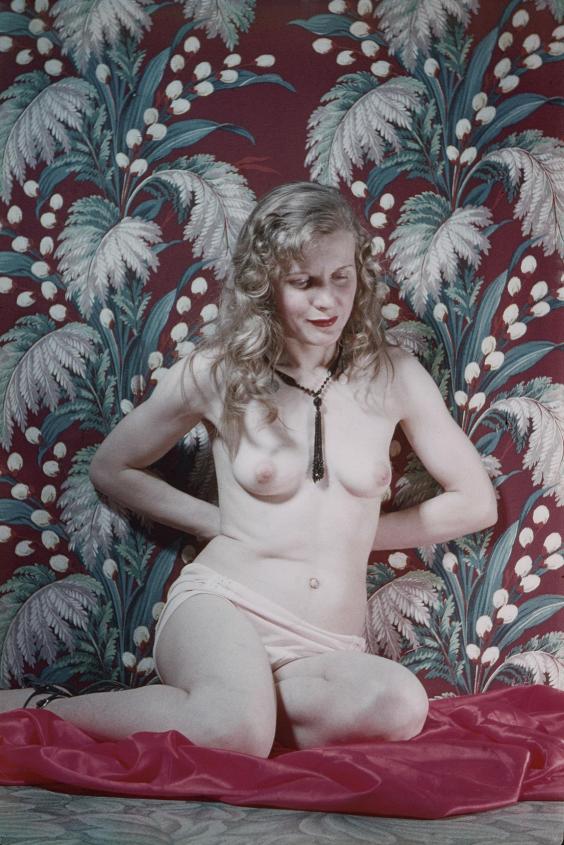
Eugene von Bruenchenhein, Untitled (Portrait of the Artist’s Wife Marie), c. 1940s, Gelatin silver print. Courtesy Lewis and Jean Greenblatt, Chicago.
On display will be carnal sculptural figures by Steve Ashby who did not make art until after the death of his wife in 1960. Works, including Rocking Bed Cunnilingus Whirlgig and Masturbating Man with Hand Under a Woman's Blouse, give animated reign to Ashby's sexual fantasies. The Virginia-born son of a freed slave worked most of his life as a waiter and gardener. But after his retirement in the 1950s had plenty of time on his hands, even more so after the death of his wife. In the 20 years between her death and his in 1980 he produced a number of striking works that are a paean, if a strange one, to her loss – including a lifesize replica of her, which he dressed and moved around the house.
Similarly, Eugene Von Bruenchenhein's erotic photographs of his wife Marie are a mixture of titillating and profound. A baker and cake decorator by day, Von Bruenchenhein would arrive home from work at 4am, sleep a little and then spend his days getting his beautiful wife to pose like a pin-up, sometimes wearing a crown made from an old coffee tin and Christmas decorations. The topless and nude images private and only began to be sold when Marie was left an impoverished widow following Von Breunchenhein’s death.
More disturbing are the grainy photographs taken of unsuspecting women by recluse Miroslav Tichý, considered the master of the stolen image in his hometown of Kyjov, Czech Republic. Tichý’, who crudely constructed of his own homemade cameras out of shoeboxes and toilet rolls, took pictures of women’s legs, or other body parts displayed on the beach. The ultimate voyeur, his work makes for unsettling viewing.
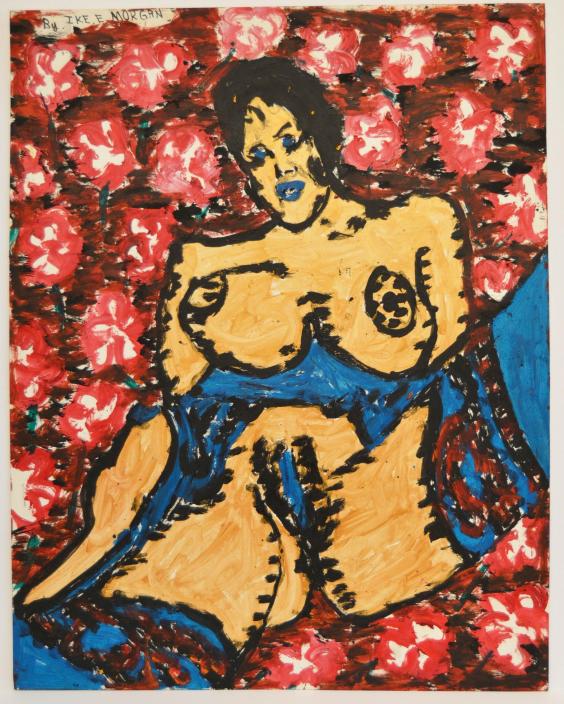
Ike Morgan, Untitled, 2014, Acrylic on pasteboard. Courtesy of Webb Gallery, Waxahachie TX
And then there’s Morton Bartlett. A Harvard-educated graphic designer, on paper Bartlett is not your typical outsider artist. But in the middle of his life, when he lived alone, he constructed a family of fifteen anatomically correct dolls: three young boys and twelve prepubescent or pubescent girls. His photographs of these dolls are probably the most disconcerting thing on display. He made clothes for them, learning to knit and sew for this specific purpose, and posed them in various tableaux, sometimes entirely innocently and at other times very suggestively.
“There is a lot of speculation about what is going on with Morton Bartlett,” Known/Unknown curator Frank Maresca says. “There are those who say he studied anatomy and wanted to produce the accurate figures. Which means including genitalia, otherwise you’re just making Barbie dolls. But these are not the kinds of figures that you normally find.”
“I’m a photographer myself and I think that Bartlett, who by all accounts was an ethical, smart person, had certain desires.... By creating the dolls he worked out his desires in a legal, moral, ethical way. It was his private obsession.”
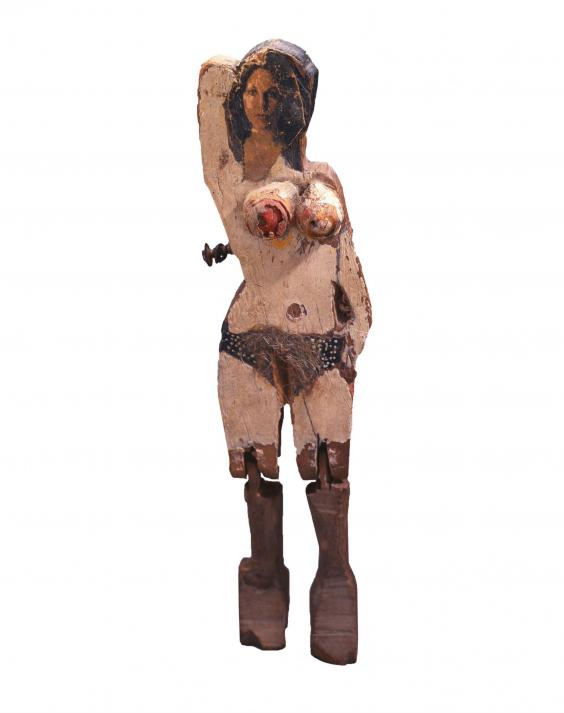
Steve Ashby, Untitled (Woman with Articulated Knees and Magazine-Cutting Face), Mixed Media. Collection of Robert A. Roth
Henry Darger, probably the most famous artist exhibited at MoSex, is another controversial figure. His watercolour, At Sunbeam Creak/At Wickey Lansinia, is full of images of little girls, sometimes being horribly tortured — a theme that is possibly related to the artist's own childhood traumas growing up in an orphanage, and later an asylum. This piece was among 15,000 pages of text and hundreds of drawings and watercolors discovered by Darger's landlord shortly before the artist's death.
There is a growing market for the Outsider Art, particularly in the US where Christie's New York now hosts an annual sale coinciding with the Outsider Art Fair with the top lot, William Edmondson’s Boxer, setting a new record at auction of $785,000 last January. In the UK the first commercial gallery selling these works, the Gallery of Everything, opened in Marylebone last September.
“I was intrigued at first by the fact that this [an exhibition about outsider artists and sex] had never been done,” Maresca says. “The bottom line is that there’s nothing more instinctual than sex. We can intellectualise it, but it is instinctive, animalistic. With self-taught and outsider artists, they work in instinctual ways, anyway. It just seemed incredibly natural.”
Known/Unknown: Private Obsession and Hidden Desire in Outsider Art from 19 January to 16 September; Outsider Art Fair is from 19 to 22 January, both in New York
26.1.17
Writing
5 books on Editing and LanguageA Shelfie from Ruth Evans Lane, Editor in Getty Publications.
Hi, I’m Ruth Evans Lane, associate editor in Getty Publications. I really like books, and I would gladly discuss language with you any day of the week. These are five books that have pushed me to think about language in different ways.
A second edition of this book just came out this last year, which I haven’t yet read, but this is an essential companion to the editor’s bible, The Chicago Manual (see below). The demands on an editor can feel overwhelming, but Carol Fisher Saller, an editor of The Chicago Manual, breaks it down in a hilarious (I promise!) and helpful way.
Steven Pinker is a cognitive scientist and linguist at Harvard, and I read this book during a truly formative time in my life—right after I finished college. I was an English major, budding editor, and insufferable pedant. Pinker completely changed the way I thought about language—you won’t catch me telling anyone irregardless isn’t a word (though if you see it in one of the books I’ve edited, know that I’m lying dead somewhere).
In my world, there is no higher authority. The Chicago Manual (CMOS) is my alpha and omega. As art editors, we from time to time follow different conventions than those set forth in CMOS, and I’ve never met a rule I wouldn’t consider breaking, but I consult this book every single day (though, more often than not, their online edition), and when I was doing my copyediting certificate at UCSD Extension, I read it cover to cover.
If anyone ever tells you that there’s a right way spell a word, well, they should spend some time looking at medieval English. English didn’t really have standardized spelling until well into the 18th century, and even today, spellings are still changing, though less dramatically than they once did. One of the most interesting things to me about Chaucer is that he is, along with Dante, the most famous early vernacular writer (vernacular in this context means the language of the common people, so English for Chaucer and Italian for Dante). During the Middle Ages in England, most texts were still written in Latin, and French was spoken at court; Chaucer and Dante (and other, less-known writers before them) were not just brilliant writers but true revolutionaries.
This is a book I edited for the Getty and it’s special to me not just because the authors were tremendously fun (see this trailer for the book) but also because it’s about an exquisitely beautiful illuminated manuscript in the Getty’s collection that also happens to be written in vernacular French (which you can hear Zrinka reading here). Most of the medieval manuscripts in our collection are religious and written in Latin, so this Middle French tale of the love affairs and adventures of a medieval knight during the Crusades is extra special. This book, which gives the truly stunning illuminations along with a translation from Middle French, also provides a fascinating account of the manuscript’s cultural and political context and an in-depth art historical analysis.
Decisions
Thinking, Fast and Slow by Daniel Kahneman. Our memory works in such a way that things that happen to us in one moment influence our behavior after that in ways we don't realize. It is a process psychologists refer to as priming, and it suggests, for example, that adopting positive language and mannerisms can in fact make us more positive:
"If you have recently seen or heard the word EAT, you are temporarily more likely to complete the word fragment SO_P as SOUP than as SOAP. The opposite would happen, of course, if you had just seen WASH. We call this a priming effect and say that the idea of EAT primes the idea of SOUP, and that WASH primes SOAP.
"Priming effects take many forms. If the idea of EAT is currently on your mind (whether or not you are conscious of it), you will be quicker than usual to recognize the word SOUP when it is spoken in a whisper or presented in a blurry font. And of course you are primed not only for the idea of soup but also for a multitude of food-related ideas, including fork, hungry, fat, diet, and cookie. ... Like ripples on a pond, activation spreads through a small part of the vast network of associated ideas. The mapping of these ripples is now one of the most exciting pursuits in psychological research.
"Another major advance in our understanding of memory was the discovery that priming is not restricted to concepts and words. You cannot know this from conscious experience, of course, but you must accept the alien idea that your actions and your emotions can be primed by events of which you are not even aware. In an experiment that became an instant classic, the psychologist John Bargh and his collaborators asked students at New York University -- most aged eighteen to twenty-two -- to assemble four-word sentences from a set of five words (for example, 'finds he it yellow instantly'). For one group of students, half the scrambled sentences contained words associated with the elderly, such as Florida, forgetful, bald, gray, or wrinkle. When they had completed that task, the young participants were sent out to do another experiment in an office down the hall. That short walk was what the experiment was about. The researchers unobtrusively measured the time it took people to get from one end of the corridor to the other. As Bargh had predicted, the young people who had fashioned a sentence from words with an elderly theme walked down the hallway significantly more slowly than the others.
"The 'Florida effect' involves two stages of priming. First, the set of words primes thoughts of old age, though the word old is never mentioned; second, these thoughts prime a behavior, walking slowly, which is associated with old age. All this happens without any awareness. When they were questioned afterward, none of the students reported noticing that the words had had a common theme, and they all insisted that nothing they did after the first experiment could have been influenced by the words they had encountered. The idea of old age had not come to their conscious awareness, but their actions had changed nevertheless. This remarkable priming phenomenon-the influencing of an action by the idea -- is known as the ideomotor effect. ...
"The ideomotor link also works in reverse. A study conducted in a German university was the mirror image of the early experiment that Bargh and his colleagues had carried out in New York. Students were asked to walk around a room for 5 minutes at a rate of 30 steps per minute, which was about one-third their normal pace. After this brief experience, the participants were much quicker to recognize words related to old age, such as forgetful, old, and lonely. ...
"Reciprocal links are common in the associative network. For example, being amused tends to make you smile, and smiling tends to make you feel amused. Go ahead and take a pencil, and hold it between your teeth for a few seconds with the eraser pointing to your right and the point to your left. Now hold the pencil so the point is aimed straight in front of you, by pursing your lips around the eraser end. You were probably unaware that one of these actions forced your face into a frown and the other into a smile. College students were asked to rate the humor of cartoons from Gary Larsons The Far Side while holding a pencil in their mouth. Those who were 'smiling' (without any awareness of doing so) found the cartoons funnier than did those who were 'frowning.' In another experiment, people whose face was shaped into a frown (by squeezing their eyebrows together) reported an enhanced emotional response to upsetting pictures -- starving children, people arguing, maimed accident victims."
|
25.1.17
War
Jay Cooke's Gamble by M. John Lubetkin. Philadelphia's Jay Cooke, who became the wealthiest man in America before losing most of his fortune in the Panic of 1873, was the person most responsible for raising money for Abraham Lincoln and the North at that perilous early moment when the country only had $1.7 million in hand. He did it through a powerful innovation -- instead of trying to sell the bonds just to the wealthy and to institutions, he assembled a large sales team and sold bonds to the middle class. In the final tally, over 500,000 individuals bought war bonds, establishing a precedent that was successfully followed in both Word War I and World War II:
"Neither [Treasury Secretary Salmon] Chase nor Lincoln wanted to finance the war by printing money or adding high income taxes; so they temporized, attempting to sell bonds.
"Following Fort Sumter, Cooke was determined to assist the North. ... While most Northern states gave the federal government men, equipment, and cash, Pennsylvania, which had promised 10,000 troops, was stymied because of previous bond defaults. Cooke volunteered to sell the bonds but was rebuffed. He then watched helplessly as the state's financial officials discovered that they could not sell the bonds. Finally, they sheepishly came back to him. Upon receiving approval on May 28, Cooke charged ahead with his old friend Anthony J. Drexel, Philadelphia's dominant banker. In three weeks they sold over $3 million in bonds. Cooke himself subscribed $10,000, which became public knowledge and added to the public's faith in him: he sold only securities in which he also invested.
"On July 21, 1861, the North was defeated at Bull Run. Federal censors tried to block the news, but a Philadelphia Inquirer reporter slipped back into Philadelphia the next morning. The news quickly spread, and businessmen wandered the streets in shock. Cooke, as surprised as anyone, swung into action. Instead of trying to gloss over the battle, he made it a rallying cry, just as the Alamo had been or Pearl Harbor and the World Trade Center would be. Going from one downtown office to another, Cooke had $l.75 million in pledges by noon, twenty hours after the battle's end. He instantly became a national hero and knew he had a workable formula, whereas Chase saw a competitor grabbing headlines. Probably prodded by Lincoln, Chase took Cooke with him to New York in August as the government tried to raise $50 million. ...
"Cooke became Chase's advisor for a $150-million bond program set for late
1861, but Chase limited his sales territory to only Philadelphia and nearby New Jersey, allowed nothing for advertising or operations, and left him on a commission-only basis. Nevertheless, Cooke enthusiastically went after a wide audience by mixing patriotism, small-denomination sales, and public awareness. Traditionally only the wealthy had been solicited, but his instincts said that the North's huge number of middle-class artisans, merchants, and farmers felt that the war was a noble cause and wanted to participate. Writing much of the copy himself, Cooke advertised in English and foreign-language papers. He also played hardball: publishers not carrying the patriotic stories that he submitted could forget advertising dollars. His participation, Josephson wrote, 'was so brilliant ... he sold so much more than the other bankers (about one-fourth of the total) that his demands (to run the entire program) could not long be resisted.' Cooke had done nothing less than formulate bond sales in the United States and Great Britain for World Wars I and II. ...
"At Lincoln's urging, on March 7, 1862, Chase appointed Cooke 'Subscription Agent for National Loan,' giving Jay sales control of all U.S. bonds. The position was undefined, Chase was clueless, and Jay quickly expanded his role. Josephson wrote: '[He] curbed or prodded speculators as he pleased ... [and] in his onward rush he had scrambled over the heads of the older cliques of financiers.' The Cookes knew more about government plans than any other banking house and consistently invested with their inside knowledge. As more Washingtonians banked with them further information came, in turn leading to even more profits and depositors, including John Wilkes Booth. There was never a hint of impropriety concerning bond sales; as the profits from the Philadelphia and Washington offices were a fraction of Jay's wealth at the war's end, the explanation for his great wealth lies in his timely use of insider information. ...
"In the 1863 campaign Cooke sold $511 million in bonds. Drawing not a penny in advance, he fielded an organization including 2,500 salesmen. Sales reached $3 million a day; and the Treasury, which had to sign each bond, was backlogged for weeks. After all expenses were paid, Jay Cooke & Co. netted $220,000: 1/25 of 1 percent. Nevertheless, the figure stirred up a storm of protest. The problem arose from Jay's making the sales look effortless: predictably, other bankers and politicians now wanted to share in the profits. ... In 1864 Cooke came under congressional investigation but was fully cleared. ...
"Mid-1864 saw another Northern crisis. Grant and William Tecumseh Sherman were stalled, casualties were horrific. Jubal Early's raid on Washington left Lincoln's reelection uncertain, and the $3 million-a-day war effort was in chaos. Chase resigned on June 29 and was replaced by Senator William Fessenden, who met with Cooke in July but -- put off by him -- gave him no business. In October, however, with only $5 million of a $40-million bond program sold, Fessenden gave Cooke $10 million, which he quickly sold. Cooke asked for the remaining $25 million and also sold these bonds. With Lincoln reelected and Congress now friendly, Cooke had sold another $200 million by February. On March 3, 1865, Congress approved the largest bond sale of the war, $600 million. Cooke said he could sell it all and, without opposition, was given the contract. ... Sales ended in July at $830 million ... with over 500,000 people purchasing bonds."
|
Subscribe to:
Posts (Atom)
